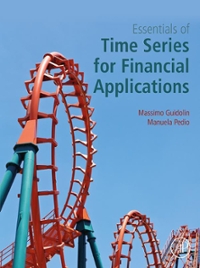Question
6.The Aggregate Demand (AD) curve is obtained by combining: (a) The consumption function, planned investment and the central bank's policy reaction function. (b) The consumption
6.The Aggregate Demand (AD) curve is obtained by combining:
(a) The consumption function, planned investment and the central bank's policy reaction function.
(b) The consumption function and the Taylor rule.
(c) The equation for PAE, the central bank's policy reaction and Y = PAE.
(d) Y=PAE and the consumption function.
(e) The equation for planned investment and the central bank policy reaction function.
7.The AD curve is generally assumed to have a negative slope. However, which of the following would be sufficient to make the AD curve vertical?
(a) Consumption is not affected by the real interest rate.
(b) Planned investment is not affected by the real interest rate.
(c) Both consumption and planned investment are not affected by the real interest rate.
(d) The central bank does not respond to the inflation rate when setting the real policy rate.
(e) Either (c) or (d) is sufficient.
8.For the AD curve, a movement upwards along a given AD curve must be associated with which of the following:
(a) A rise in the real interest rate.
(b) A fall in the real interest rate.
(c) A rise in the equilibrium level of real GDP.
(d) A fall in the rate of inflation.
(e) None of the above
10.Which of the following represents adaptive or backward-looking inflation expectations?
(a) e(t) = (t)
(b) e(t) = (t-1)
(c) e(t) = (t+1)
(d) e(t) = Y(t) - Y*
(e) None of the above
12.Suppose the short-run AS curve is given by:
(t) = (t-1) + (t)
If there is a temporary (one-period) favourable inflation shock ( < 0), in the short-run;
(a) The inflation rate will increase for one-period and then immediately return to its pre-shock value.
(b) The inflation rate will decrease for one-period and then immediately return to its pre-shock value.
(c) The inflation rate will increase when the shock occurs and remain at new higher level.
(d) The inflation rate will decrease when the shock occurs and remain at new lower level.
(e) None of the above
13.The country of Bree is experiencing a contractionary output gap. Other things equal, what will be the effect over time of the output gap on the inflation rate in Bree?
(a) The contractionary gap will cause inflation to increase.
(b) The contractionary gap will cause inflation to fall.
(c) The inflation rate will be unaffected by the contractionary gap.
(d) The inflation rate will initially fall, but eventually increase to its original level.
(e) The inflation rate will initially rise, but eventually decrease to its orginal level.
14,Which of the following is true in long-run equilibrium in the AD and AS model?
(a) Actual and expected inflation are both equal to zero.
(b) The change in actual inflation is equal to zero.
(c) Y < Y*
(d) Y > Y*
(e) Actual inflation is greater than expected inflation.
20.In the AD and AS model which of the following best describes the effects of an increase in potential output.
(a) There is an expansionary gap in the short-run, but higher real GDP and lower inflation in the long-run.
(b) There is an expansionary gap in the short-run, but higher real GDP and higher inflation in the long-run.
(c) There is a contractionary gap in the short-run, but higher real GDP and lower inflation in the long-run.
(d) There is a contractionary gap in the short-run, but higher real GDP and higher inflation in the long-run.
(e) Real GDP increase in both the short-run and the long-run and inflation falls in the long-run
Step by Step Solution
There are 3 Steps involved in it
Step: 1

Get Instant Access to Expert-Tailored Solutions
See step-by-step solutions with expert insights and AI powered tools for academic success
Step: 2

Step: 3

Ace Your Homework with AI
Get the answers you need in no time with our AI-driven, step-by-step assistance
Get Started


